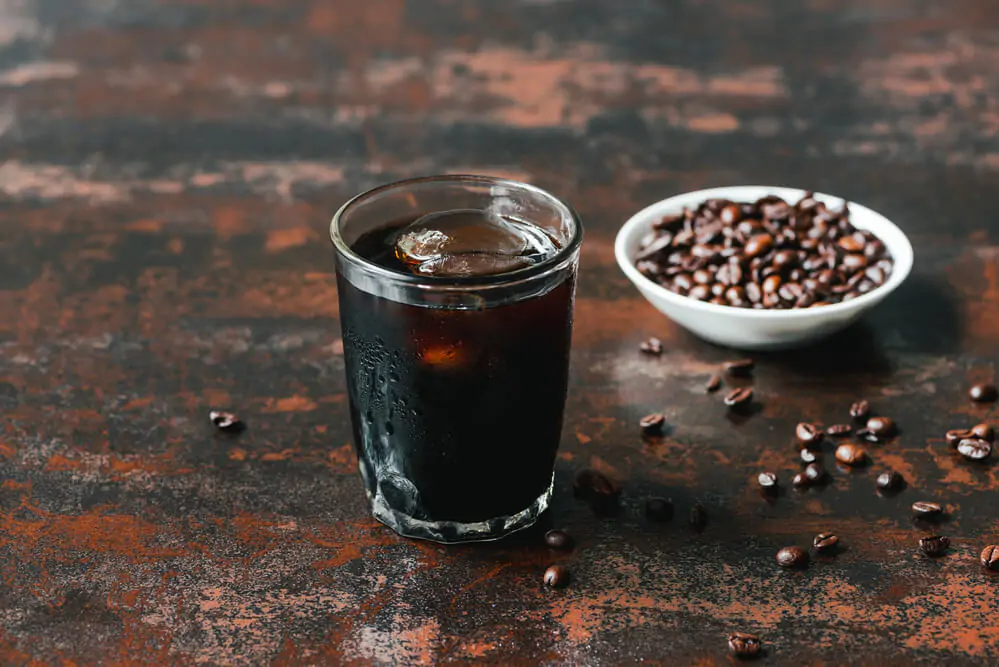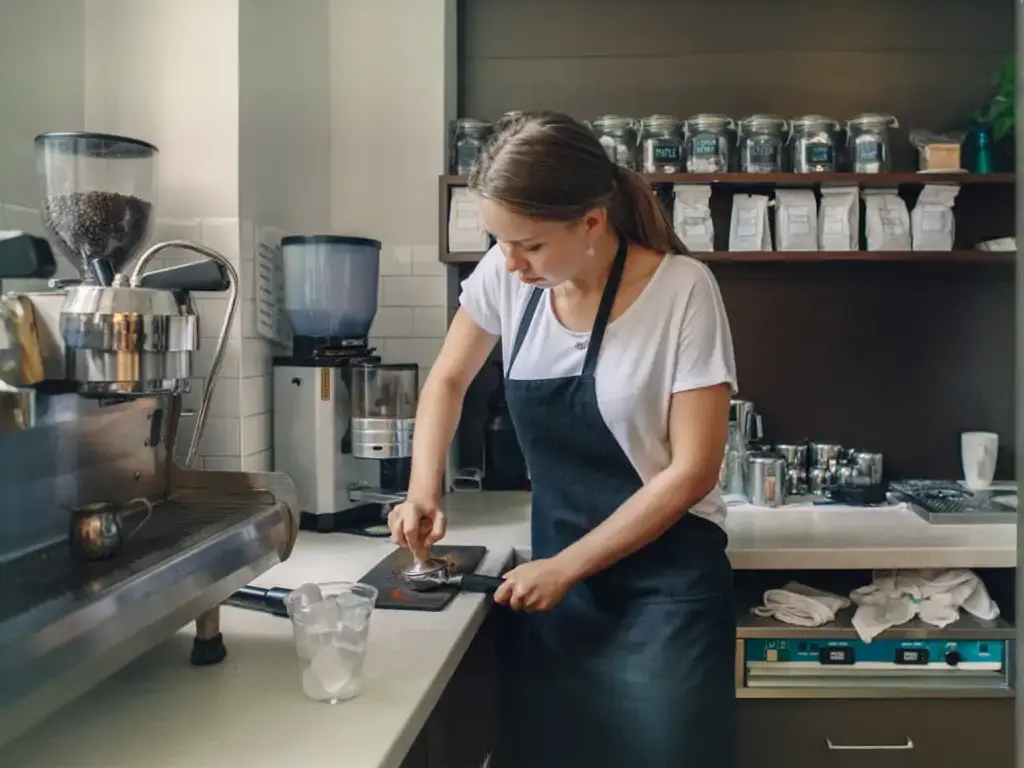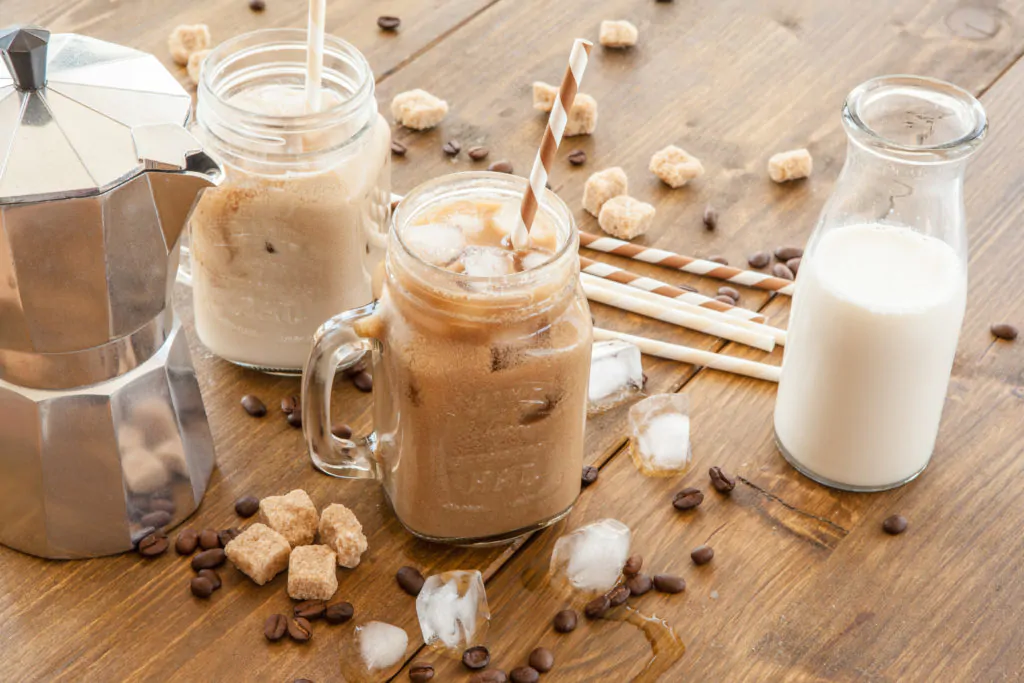“Does cold brew have more caffeine?” Here, we’ll explore the answer, and learn more about how cold brew coffee is made.

If you’ve ever enjoyed a cold brew coffee and felt a sudden burst of energy afterward, you may have wondered, “Does cold brew coffee have more caffeine?”
Whether you’ve felt jitters after drinking cold brew or you’ve simply felt like iced coffee gave you more energy, it’s possible that cold brew can have a higher caffeine content than hot coffee and espresso.
The key to whether a cold-water-based coffee has a higher amount of caffeine can depend on several factors, including the water-to-coffee ratio during the brewing process, whether the concentrate is double brewed, and whether the cold brew is cut with milk or water before serving.
Does Cold Brew Have More Caffeine?
Since cold brew coffee is made differently than hot coffee, it’s hard to compare the two directly.
Brewing coffee with hot water extracts more caffeine out of the beans than brewing coffee with cold water, but this doesn’t mean that a cup of hot coffee is always going to have higher caffeine levels than a cup of cold brew.
During the cold brew process, a larger amount of coffee grounds and a smaller amount of water is used than during the brewing process for a standard cup of coffee. This means that the coffee produced during the cold brew process is often stronger than that produced using traditional brewing methods.
Cold water isn’t as efficient as hot water in extracting caffeine from coffee beans, but a large amount of coffee grounds used means that cold brew can be extremely strong.
Which Cold Brew Has The Most Caffeine?

If you make cold brew coffee at home, you get to choose the coffee-to-water ratio, as well as how you’d like to dilute your cold brew concentrate. This means that you can make your cold brew as strong or as weak as you like.
When you buy cold brew from a coffee shop, it’s a little bit different.
A 12 oz. (tall) cold brew coffee from Starbucks has about 150mg of caffeine. The same-size cold brew coffee from Dunkin’ Donuts contains about 130mg of caffeine. For comparison’s sake, a 12 oz. hot coffee usually has between 130-140mg of caffeine, while a shot of espresso contains about 64mg of caffeine.
Studies show that the amount of caffeine in cold brew coffee can vary quite a bit. Many factors, including the temperature at which the cold brew is created, how long the cold brew undergoes the brewing process, and the type of beans used to create the drink can all play a role in determining caffeine level.
Are Cold Brew And Iced Coffee The Same Thing?

Not usually. Cold brew coffee has always been cold and is less acidic than iced coffee. In most coffee shops, iced coffee is made by brewing hot coffee that is then cooled and finally poured over ice before being handed to the customer.
Cold brew is often more expensive than iced coffee, as the brewing process takes longer. Many coffee lovers find that cold brew offers a smoother, less bitter taste than traditional iced coffee.
It’s hard to say definitively whether cold brew coffee has more caffeine than a standard hot cup of coffee. Usually, the caffeine content of cold brew is similar to that of traditionally brewed coffee. Certain factors, such as the type of beans used or the amount of time spent cold brewing, can also affect the caffeine level of cold brew coffee.
You might also be interested in our guide on whether can you eat raw coffee beans.
The Final Word On Does Cold Brew Have More Caffeine?
FAQs On Does Cold Brew Have More Caffeine?
Is cold brew the strongest coffee?
Not necessarily. The amount of caffeine in a cup of cold brew coffee is similar to that in a cup of hot coffee.
Is cold brew healthier than regular coffee?
Both cold brew and hot coffee have fewer than five calories per cup. Added milk and sweeteners determine the nutritional value of a coffee drink. If you’re considering antioxidant and acidity levels, hot brewed coffee may be the better choice.
